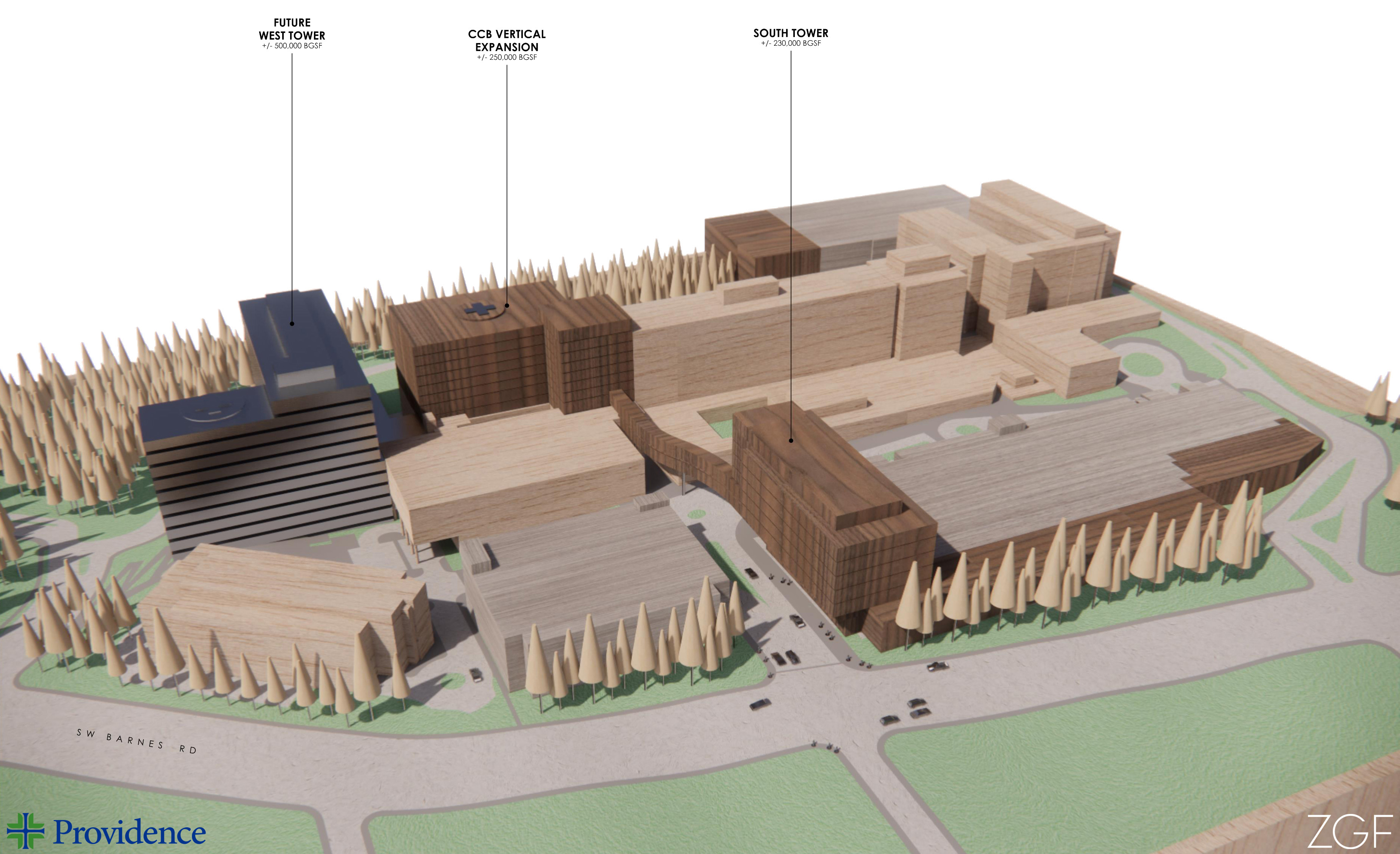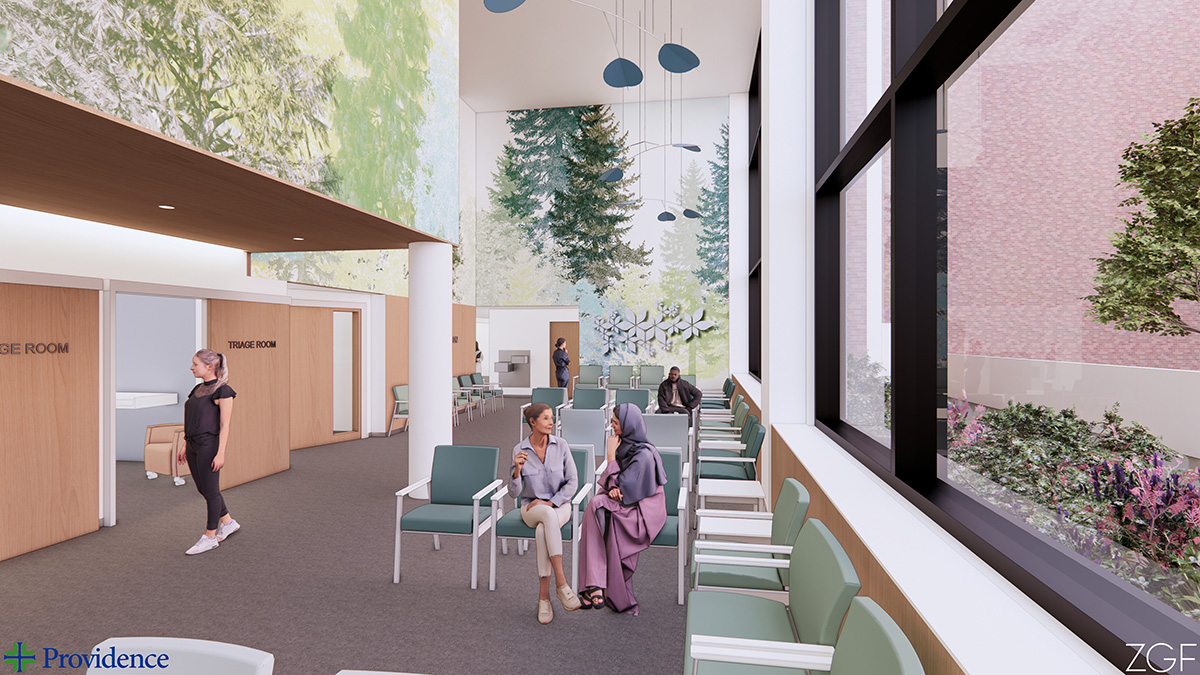July 10, 2025
Inclusive approach leads Ferris State alum to national healthcare design award

You might assume that creating effective healthcare spaces begins with a blueprint. But Lauren Cole knows from experience that success in this arena actually springs from curiosity.

Lauren Cole
As the system director of design strategy for Providence Health Services, she lays the foundation for complex healthcare design projects by first working to understand the needs, perspectives, and experiences of everyone they serve.
And the industry is taking notice.
Cole, a graduate of Ferris State University’s Kendall College of Art and Design, is among a select group of professionals recognized in Healthcare Design magazine’s HCD 10 awards, celebrating bold thinkers and trailblazers shaping the future of healthcare design.
"The award is special because it comes from other people in the industry,” she said. “To be recognized by my peers as a valued contributor to an industry I'm so passionate about is the best feeling in the world.”
Earning two undergraduate degrees from KCAD—a BFA in Graphic Design in 2007 and a BFA in Interior Design in 2016—as well as a Adanced Studies in Design and Innovation Management Certificate in 2018, helped pave the way for a career rooted in connecting people, spaces, and systems across boundaries.
“When I think about design decisions that we're going to make, I start with asking who's going to be impacted and how we make sure their voices are heard,” Cole said. “It's not just about patients — it's also about all the thousands of other people who are going to interact with the space, from providers and caregivers to operators and consultants, to administrators and facilities staff.”
Since joining Providence in 2023, Cole has elevated the organization’s external impact by reshaping its internal culture. One of her key contributions is Providence Spaces, a virtual hub that gives teams across the organization’s 52 hospitals and over 1,000 clinics access to a dynamic library of guidelines, best practices, tools, case studies, and performance insights.
To develop the platform, Cole brought a wide range of voices to the table—including operational leaders, executive teams, architects, and industry partners—to ensure it was responsive to the actual needs and experiences of Providence's 120,000-plus employees. The result is a comprehensive, ever-evolving resource that encourages continuous learning and more intentional collaboration.

Rendering showing Providence Portland Medical Center’s (Portland, OR) Emergency Department Main Lobby after renovation, including life-size ‘forest bathing’ inspired artwork featuring tree species from local Mt. Tabor Park.
A big part of what’s made Providence Spaces so successful is its focus on embracing adaptability as opposed to enforcing rigid standards. Cole says that’s a stark change from how the industry typically approaches getting everyone on the same page.
“If we approached our design process the way that healthcare organizations tend to, which is super prescriptive—this is the chair everyone uses, this is paint shade on all the walls, this is the exact way each waiting room is configured—we immediately run into problems because each of our care settings has its own unique set of circumstances,’ she said. “My mantra has been ‘how can we standardize the process we use to uncover design solutions instead of standardizing the solution itself?’”
Patient drop-off areas are a good example. It makes sense that every Providence facility should have a covered drop-off area to shield patients from the elements, but Providence Spaces doesn’t require the covering to be made of a specific material, to be a specific size, or the entry itself to be positioned in a particular part of the building. Rather, it gives teams insight into how others in the organization have solved the challenge and empowers them to develop a solution that makes sense for their specific context.
By positioning real-world experience and common sense as key filters for decision making, Providence Spaces has helped foster a culture of agency and belonging throughout the organization that’s also helping drive talent recruitment and retention in a time when many key healthcare occupations are facing a shortage.
“We've put the bulk of trust and decision-making power in the local project team, because having that buy-in from people on the ground is critical,” Cole said. “Nobody wants to only see mandates handed down from corporate; they want to be part of the process and know that their ideas and perspective are valued.”
Cole also developed the Providence Signature Experience Workshop as a way for a diverse group of caregivers and external partners to reimagine the patient and caregiver journey. Through immersive role-playing exercises that highlighted a range of lived experiences, the workshop prompted fresh thinking around Providence’s commitment to diversity, equity, and inclusion.
Both initiatives have given rise to new design strategies and operational practices now in motion at Providence. For one interior design project at a plastic surgery office in Seattle, designers focused on creating a space that resonated equally with two core user groups—trans women and women who had undergone mastectomies for breast cancer treatment —that, on their surface, seemed vastly different.
“We learned from our explorations that, at the end of the day, both groups want the same experience: to look in the mirror and feel good about themselves,” Cole said. “That perspective made it much easier to shape the interior environment because we understood it was about finding commonality rather than accounting for difference.”
For another interior design project in Portland, Oregon, a Providence design team spent time connecting with a local tribal youth group and learning about a garden they’d cultivated of plants their ancestors have been using medicinally for thousands of years. As a result, stylized illustrations of those same plants became central design elements of the new interior space, helping create a welcoming environment and a sense of belonging for the indigenous communities whose ancestral lands the facility now sits on.
On a broader level, Cole’s influence was instrumental in helping the St. Vincent Medical Center in Portland develop a viable growth plan that afforded the greatest possible degree of future flexibility despite the campus being surrounded by developed properties.
The project design team focused on building consensus for what growth could look like on both short-term and long-term basis, working with a variety of stakeholders to identify multiple opportunities to add beds across multiple different care units, and to refine existing spaces where new expansions weren’t feasible.
“It’s about developing that shared understanding of where we need to be in 15 years and all the challenges we might face along the way so we can ultimately design the road map to get there,” Cole said. “And we can design it in a way today where we can get to just the right level of detail without locking ourselves into decisions that we may need to back out of later.”
Championing an inclusive approach to healthcare design has fueled Cole’s own growth just as it has for the organization she helps lead. And when it comes to the spotlight of the HCD10 Awards, she’s the first to point out that she doesn’t stand in it alone.
“I think each of us as individual contributors are only as good as leadership allows us to be, and I get to work for and with some amazing leaders,” she said. “We’re all encouraged to be courageous and curious, and that is crucial to being able to make these kinds of transformative connections across a larger organization like Providence.”

